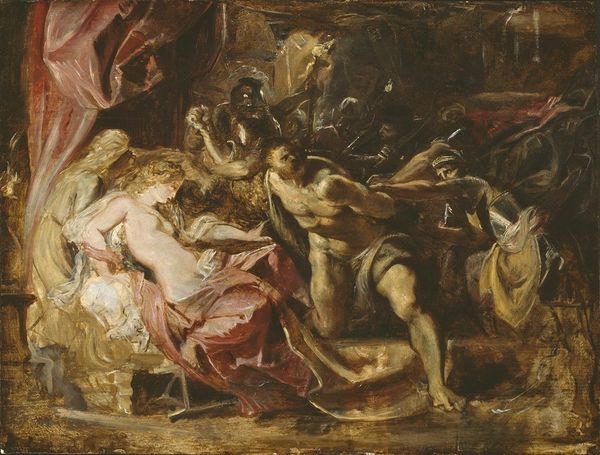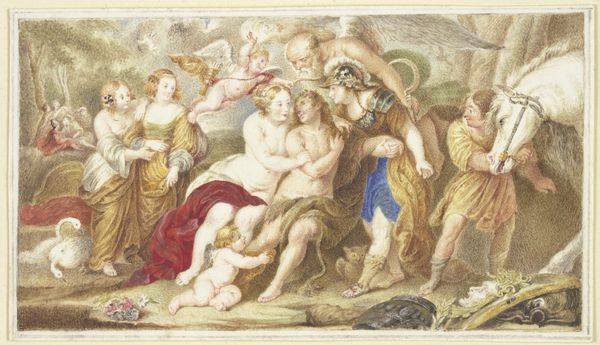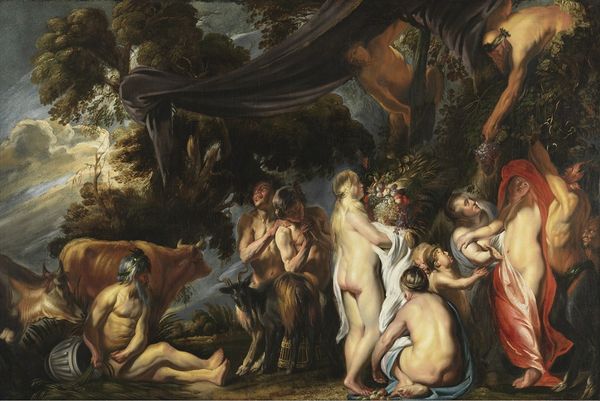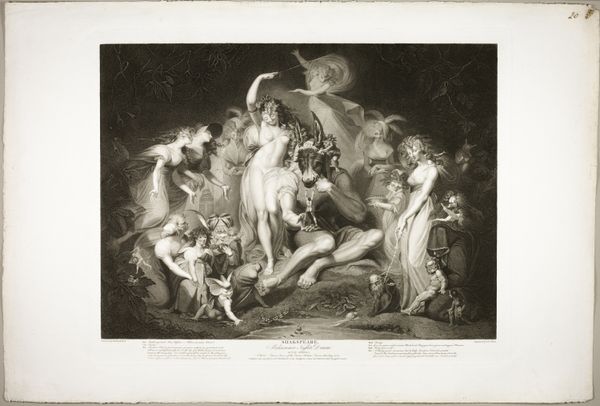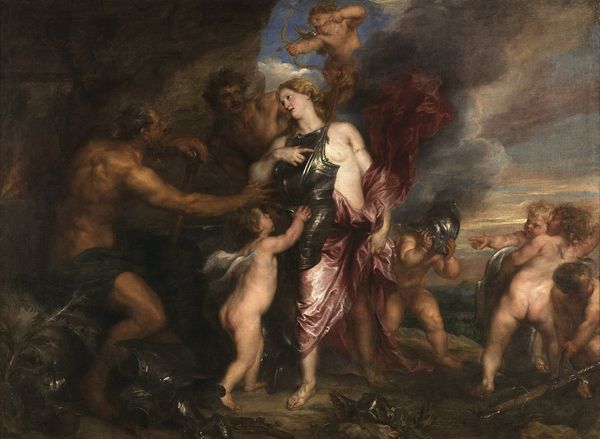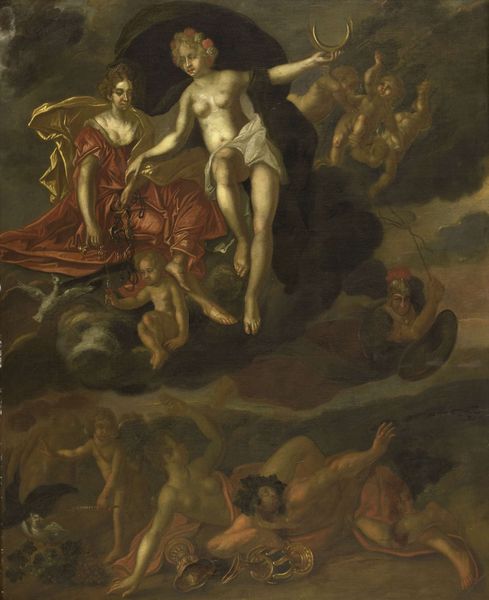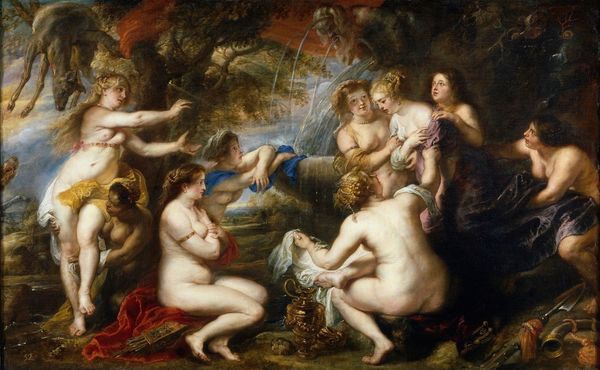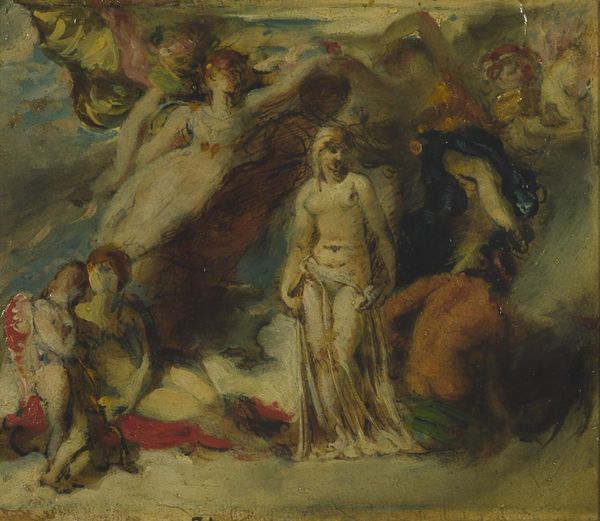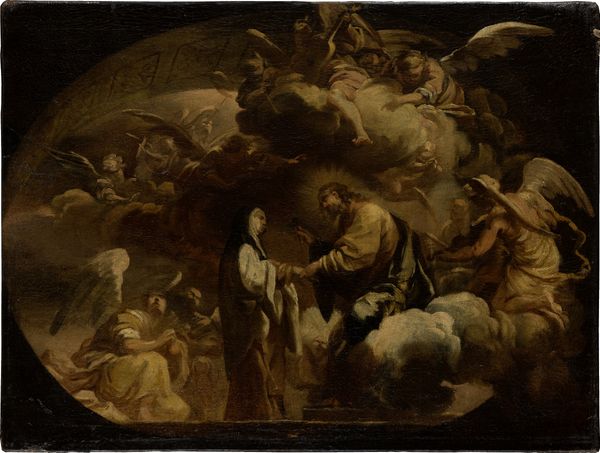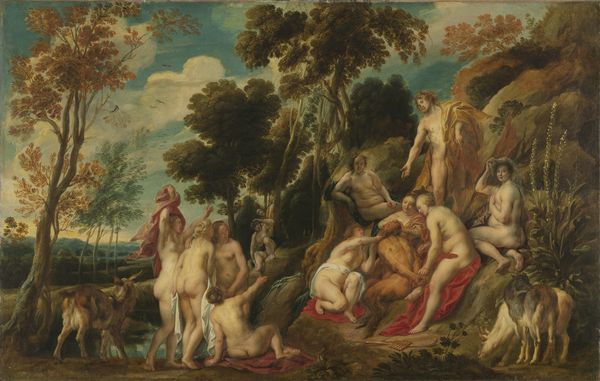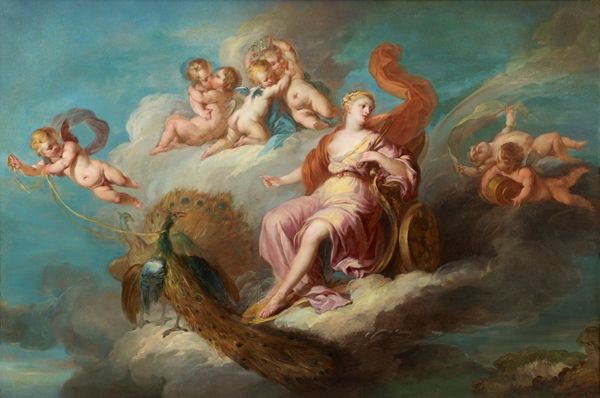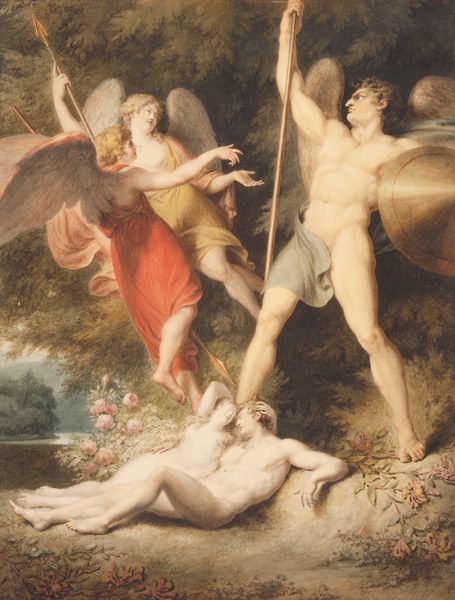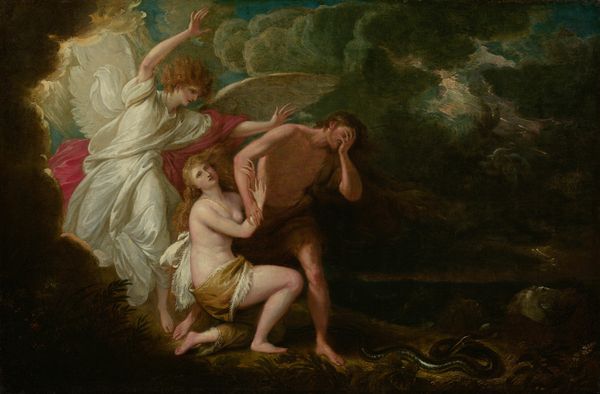
Dimensions: support: 2172 x 2756 mm frame: 3167 x 2600 x 155 mm
Copyright: CC-BY-NC-ND 4.0 DEED, Photo: Tate
Curator: Fuseli's "Titania and Bottom," housed here at Tate Britain, presents a rather startling composition. The scene, derived from Shakespeare, evokes a powerful unease. Editor: Yes, that's immediately apparent. The sheer physicality of Bottom's transformation—the crudeness of the donkey head contrasting with Titania's ethereal form—is quite striking. What materials did Fuseli employ to create such stark contrasts? Curator: Oil on canvas, primarily. The texture is remarkably smooth, allowing for the stark contrasts in light and shadow. I find the formal arrangement, with its echoes of Mannerist serpentine lines, truly compelling. Editor: Compelling, perhaps, but also revealing of the era's class consciousness. Bottom, a common laborer, is rendered monstrous, while Titania maintains her aristocratic grace, even in infatuation. The application of paint seems almost to reinforce these divisions. Curator: Indeed. The dynamic play of gazes, with the fairies seemingly observing this absurd union, emphasizes the thematic tension. The painting becomes a stage for exploring the very nature of desire and perception. Editor: It is interesting how the artist is using real people in a fantastical setting. The textures are so real, but it depicts an otherworldly narrative. Curator: An astute observation that underscores the enduring power of this singular artwork. Editor: Absolutely, and through its production, we can see the societal values, too.
Comments
tatebritain 8 months ago
⋮
http://www.tate.org.uk/art/artworks/fuseli-titania-and-bottom-n01228
Join the conversation
Join millions of artists and users on Artera today and experience the ultimate creative platform.
tatebritain 8 months ago
⋮
This monumental painting shows a scene from Shakespeare’s A Midsummer Night’s Dream. A spell is cast on Titania, the queen of the fairies, making her fall in love with Bottom, whose head has been transformed into a donkey’s. Henry Fuseli imaginatively fills the picture with fairies and fantastical creatures. The painting was one of the stars of the Shakespeare Gallery in London, which opened in 1789. The gallery helped define a school of painting in Britain which valued artistic individuality and variety. The originality of Fuseli’s art was seen as a sign of his genius. Gallery label, May 2023
